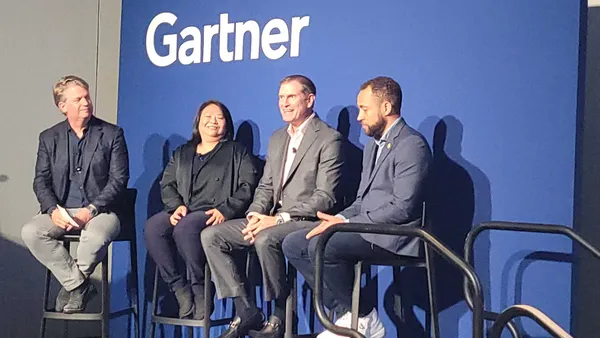Our world and workplaces are changing daily, sometimes almost hourly. For nearly every organization today, Talent Acquisition teams are operating in a complete state of uncertainty. We’re seeing companies across industries experiencing a wide range of impact – while some organizations are thriving and hiring in an unprecedented way, others have stalled or even reduced their workforce significantly.
Many months ago, long before anybody could have anticipated the impact of this pandemic, we partnered with Madeline Laurano of Aptitude Research to better understand the state of hiring hourly workers. As you can imagine, we found a huge disconnect between the effort employers were putting into the hiring process and how job seekers actually felt about their candidate experience. With 62% of job seekers saying they never even heard back after applying, and satisfaction levels across every critical point in the hiring process hovering around 20-30%, the research tells us there is room for evolution and improvement.
Long before we found ourselves in a sudden economic ‘pause’, we planned a candid video conversation with seasoned talent acquisition pros to discuss the research and tackle the topic of improving hourly hiring. With a discussion led by Madeline Laurano, leaders acknowledged the state of today’s pandemic on current operations, but also shared their thoughts on how examining the topic of hourly hiring remains relevant as organizations look ahead to how they can emerge even stronger. Like many HR and Talent leaders, you may be using this time to re-evaluate processes on the path to a ‘new normal’ – to inspire your journey, here are a few of the lessons learned from the live session (now available on demand).
Lead with Trust and Flexibility
Lowe’s happens to be one of the organizations flourishing amid the pandemic, continuing to hire workers and reward their store employees. We asked Ed Crowe, Divisional Talent Acquisition Director, about his experience working with teams in the field during this unprecedented time. While he acknowledged the dedication and support within local communities has been absolutely humbling, he also recognized that constantly changing information means they don’t always have all of the answers. For store environments, where candidates are often also customers, that entry level hourly job is possibly the most important role for a number of reasons. As Ed pointed out, these are historically a vital pipeline for leader development with many of their supervisory roles and executives growing from hourly roles – not to mention the contribution they make to the feeling of community and loyalty that become a real differentiator for stores. This means hiring managers want to get the right people into roles, and this emotional part of the process can also sometimes mean it slows the process, but this again comes back to trusting those frontline leaders.
This means: Empowering leaders at a local level to make their best-informed judgement calls to eliminate bottlenecks has become more important than ever before.
Communication is [Even More] Critical
Crystal Lewis, former SVP of Talent Acquisition at Bank of America, recalled her experience recruiting during the historic financial crisis when sometimes even the recruiters themselves were uncertain about their own livelihood. Before this crisis, research told us just how much hourly job seekers were craving communication throughout their candidate journey – and often, weren’t getting it. Now, candidates are nervous and there is no such thing as ‘over-communication’, get creative with new channels depending on the audience or location or role. Take a moment to really understand what the candidate wants to hear and when, this helps find the right balance of human and automation so vital recruiting resources are being utilized for ‘the moments that matter’ and hiring managers can run their business. Ed pointed out, “put passion into the messages that you leave people” - this is perhaps our opportunity to get back to the real craft of recruiting.
This means: Communication across channels and throughout the process is critical – don’t take any detail for granted.
Design with the End Users in Mind
As a talent acquisition professional, you have two end users in mind – the hiring manager and the candidate. As Crystal pointed out, while the candidate expectations seem to be changing quickly the hiring manager mentality isn’t always evolving as fast. Managers often have the intent to keep candidate interaction personal, and this can become a roadblock for those that are overtasked with also running the business. This provides an opportunity for talent acquisition professionals to take a step back, looking at the critical points in the hiring process where the hiring manager is involved and leveraging both technology and support to reduce bottlenecks. With a similar lens looking at the candidate experience, understand what those job seekers truly want – for example, some roles where people simply want a paycheck might mean you can’t rely on your brand arrogance to pull people in. Are hiring managers losing candidates because it takes too long to schedule interviews? Is a two-week background check the real reason you’re losing candidates to your competitors? Ultimately, rely on data to help you craft the story, you might find the barriers aren’t what you thought.
This means: Designing processes and technology should never be ‘one and done’, evaluation has to happen on a regular basis – don’t forget to ‘secret shop’ your own experience!
In this time of uncertainty, connection and conversation are powerful tools in moving ahead – listen to the full conversation on demand, ‘A Candid Discussion: How Can We Improve Hourly Hiring?’.










